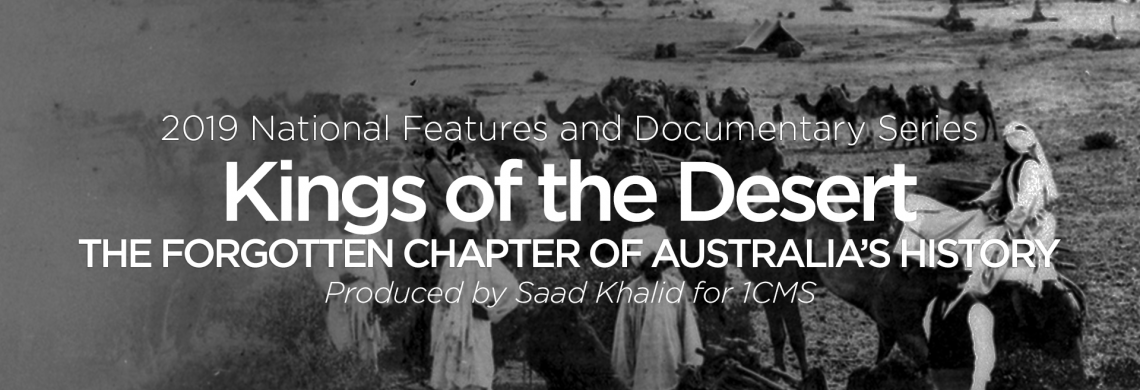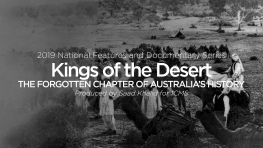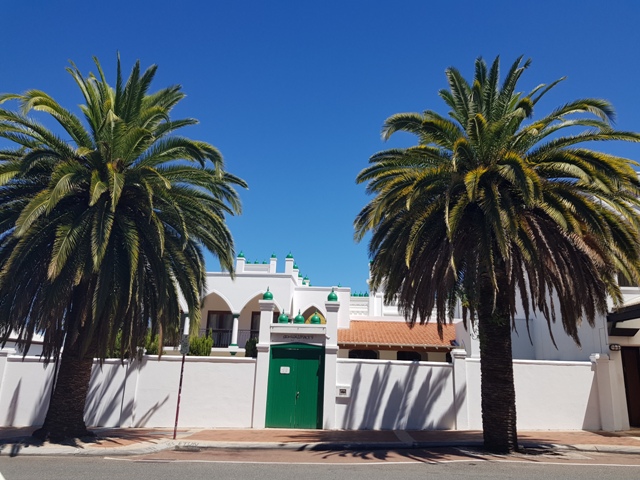

Kings of the Desert
The Australian Muslim Cameleers opened up the interior of Australia during the 19th and 20th centuries.
Their work was tough and the life that they lived is a largely a forgotten chapter in Australia’s history.
Join Saad Khalid, from 1CMS, as he explores how the ‘Ghans contributed to the development of today’s Australia.
Produced by Saad Khalid of 1CMS, Canberra.
Supervising Production by Alan Mitchell.
The 'Ghans' pivoted the tough conditions of inland Australia by Camel and Foot in order to make it what is today.
It's a story that recoups the forgotten stories and the epic legacies of the Australian Muslim Cameleers at the height of the White Australia Policy during the 19th and 20th Centuries.

How would you feel if your contribution to society was disregarded?
What if the life that you lived was not remembered? It would be a terrifying feeling wouldn't it?
Knowing that these contributions were a significant part of Australia's history and that they were not duly recognized at their time, gave me mixed emotions. They were the ones who carted camels, travelled thousands of miles, and provided Australia with infrastructure such as the railway lines, the overland telegraph system, roads, maps alongside the overland telegraph system.
The burning question to me was, should they have been considered Pioneers in our history books or was their work more of an auxiliary role in terms of providing support to the British explorers on their expeditions across the inland. But as Hanifa Deen, author of two books on the Australian Muslim Community rightly states, 'who is the Pioneer? The Man who says he is the leader, and he has the money to organize it, or the Cameleer who makes sure they survive as they travel'.

IMAGE: The Australian Muslim Cameleers in Beltana, 1870.
In 2018, this very question, made me set out on a journey, where I spent countless hours in the National Library of Australia, the State Libraries of South Australia and Western Australia, where I tried to understand the dynamics of Australia at that time, as to why these contributions slowly became a forgotten chapter of Australia's history.
Was it the colour of their skin? Or simply the nature of the work that they performed?
Why couldn't they just be grouped with other explorers of their time?
During their time in Australia, they had faced many difficulties, at their time, which made their stays, a very uncomfortable experience. This is attested to by the fact that over 3000 of such Cameleers once roamed the Australian Outback in 1890, but with the invention of the Locomotive and better, faster ways to travel, many Cameleers lost their jobs, and chose to return back home to their native, Pakistan and Afghanistan.
Some chose to stay, establishing families of their own by marrying local Indigenous, and European women. However, they faced challenges in the years to come, bringing up their children at the height of the White Australia policy. Some Cameleer descendants, become part of what later became known as the 'Stolen Generation' .

IMAGE: A silhouette that shows Camels and the Cameleers - Wyndham WA.
In finding the roots and origins of the Cameleers, I had spoken to various academics, authors, researchers and eminent personalities in understanding the problems that the Cameleers had faced during their time in Australia.
Some spoke about the 'Ghan' controversy, whereas people from say that most of the Cameleers came from the areas which are now Pakistan whereas others talk about the short term nature of their work, which was originally intended to be on a short term basis.
I spoke to Gohar Rind, a resident of Perth, Western Australia as he tells the story of his family coming to Australia, and the life of his Great Grandfather, Goolam Badoola Rind who was granted Australian citizenship for his exemplary services during the Great Floods. There are other families in Australia, which do not know of their linkages to the Cameleers in one way or another.

IMAGE: Adelaide Mosque const. 1890 by the Afghan Cameleers. It is one of the remaining buildings with links to the Cameleers where people continue to pray, which indicates their presence being felt even today.

IMAGE: Perth Mosque const. 1905 by the Afghan Cameleers of Western Australia. Still in use today, by the Australian Muslim Community, it is characterised by it's two palm trees which cover the front entrance.
All in all, this story was hidden until the late 1970s and early 1980s, when it was suddenly realized that these Cameleers had some sort of contribution to Australia and that it should be better acknowledged.
This was a very humble effort made by myself in showing these contributions to the wider public. I would like to thank my mentor, Alan Mitchell for his innumerable hours spent with me in shaping the story, to Giordana and the CMTO and Andrew and the CBAA, for their persistence and their excellent technical knowledge in terms of content production and radio broadcast, and to the Canberra Multicultural Service and Lieta for always providing opportunities such as the NFDS in learning the ropes of radio broadcast.
This project was just the start of something bigger. It was completed alongside my Year 12 exams, which meant travel had to be extremely limited and some interviews had to be limited to over the phone.
Stay tuned and follow the Canberra Multicultural Service website alongside a Kings of the Desert Facebook page, as there is an upcoming 8-hour podcast proudly supported by the Community Broadcasting Foundation, made by myself, a higher quality production, which looks into their contributions, and their roots and origins in far greater detail. This will release in March 2020, and I will be travelling to Alice Springs in NT, Broken Hill in NSW, and Kalgoorlie in WA later this year where I will be finding traces of this hidden history. Stay tuned for further updates!
If you would like to know more about the Australian Muslim Cameleers, I would suggest looking at a film made by the ABC, 'Compass and Quran' which you can find on Youtube, free of cost and books by Pamela Rajkowski, Hanifa Deen, and Dr Phillip Jones and Anna Kenny which look into the subject in further detail.
Also used were songs by CAAMA in their album 'The Last Camel Train'. Check them out as their songs, 'Alice Springs Remembers', 'Ship Came in' and 'The Last Camel Train' alongside others tell a very inspiring story.
- Saad Khalid
The Interviewees
- His Excellency Babar Amin, the High Commissioner of Pakistan to Australia
- Hanifa Deen, author of 'Caravanserei' and 'Ali Abdul versus the King'
- Pamela Rajkowski - Expert and Author of 'Linden Girl' and 'In the Tracks of the Camelmen'
- Gohar Rind - Descendant of Goolam Badoola Rind, a Baluch Cameleer granted Australian Citizenship for his contributions during their great floods
- Professor Amin Saikal, Political Science, Australian National University
- Professor Samina Yasmeen, Founder of the University of Western Australia's Centre for Muslim States and Societies
This piece was made for the 2019 CBAA National Features & Documentary Series, a showcase of work by new and emerging Australian community radio producers, with training and mentoring provided by the Community and Media Training Organisation. The opinions expressed in National Features & Documentary Series content are those of the individual producers or their interviewees, and not necessarily shared by the CBAA or CMTO.
Produced with the assistance of the Department of Communications and the Arts via the Community Broadcasting Foundation.
Facebook comments